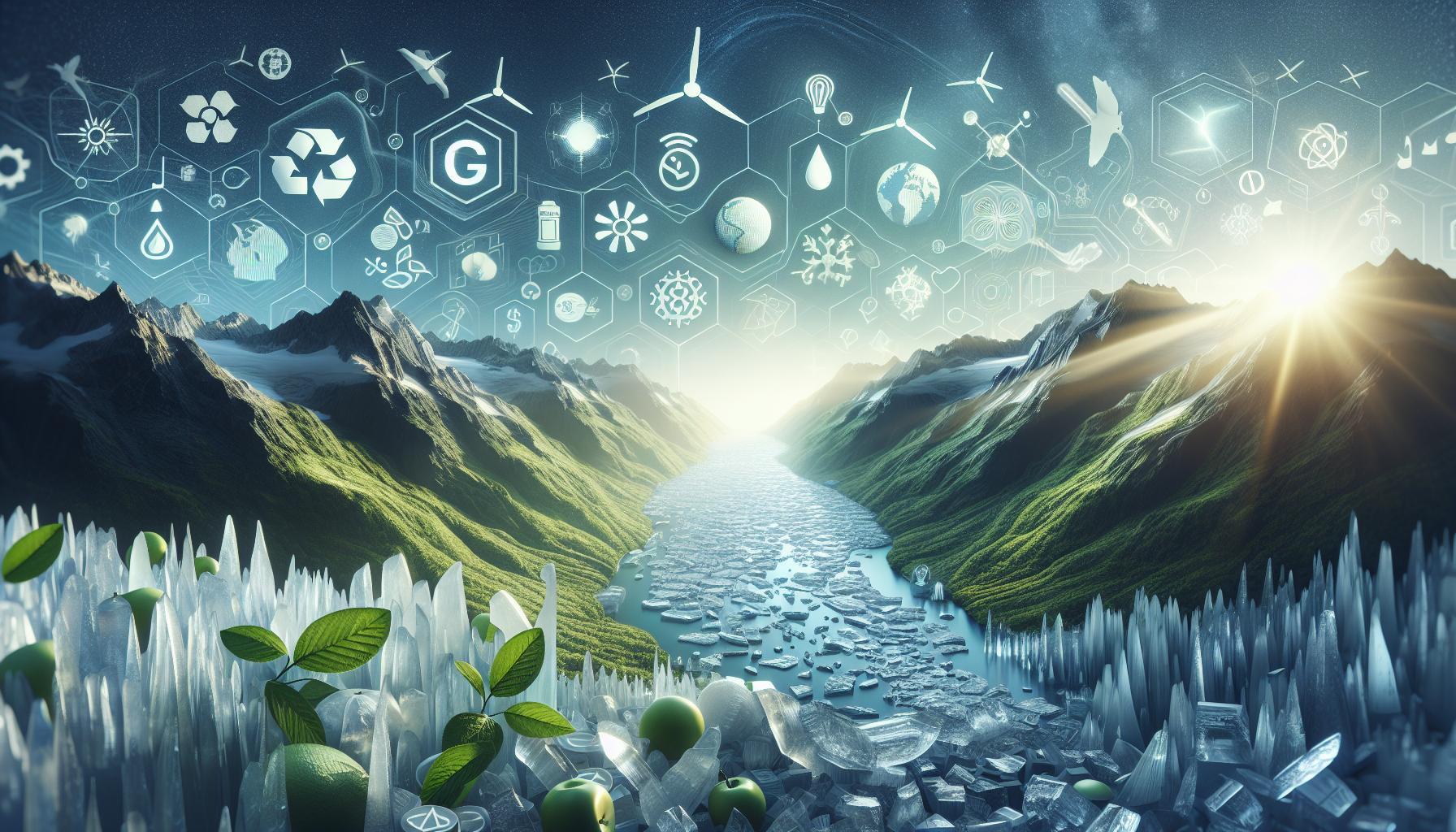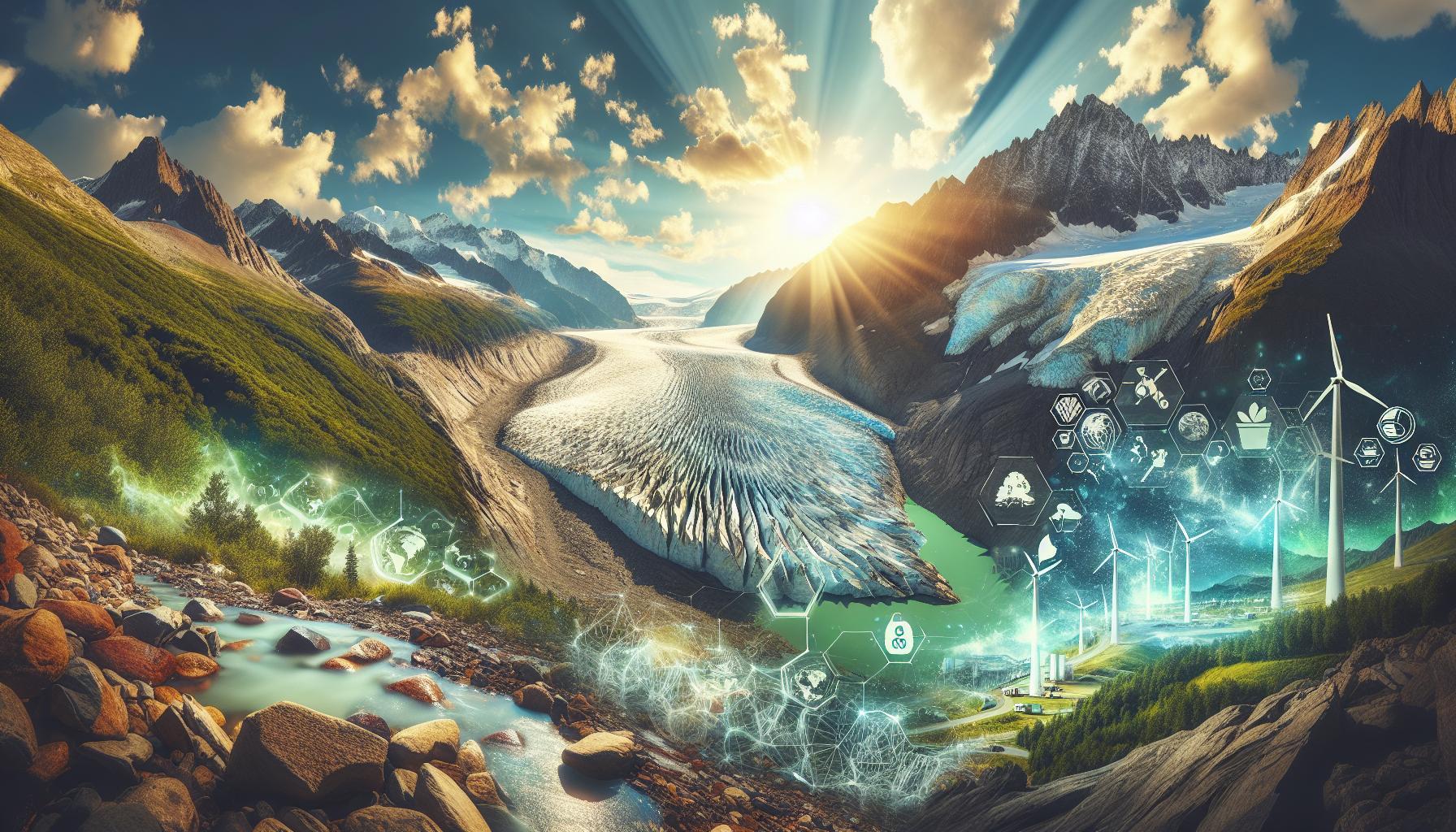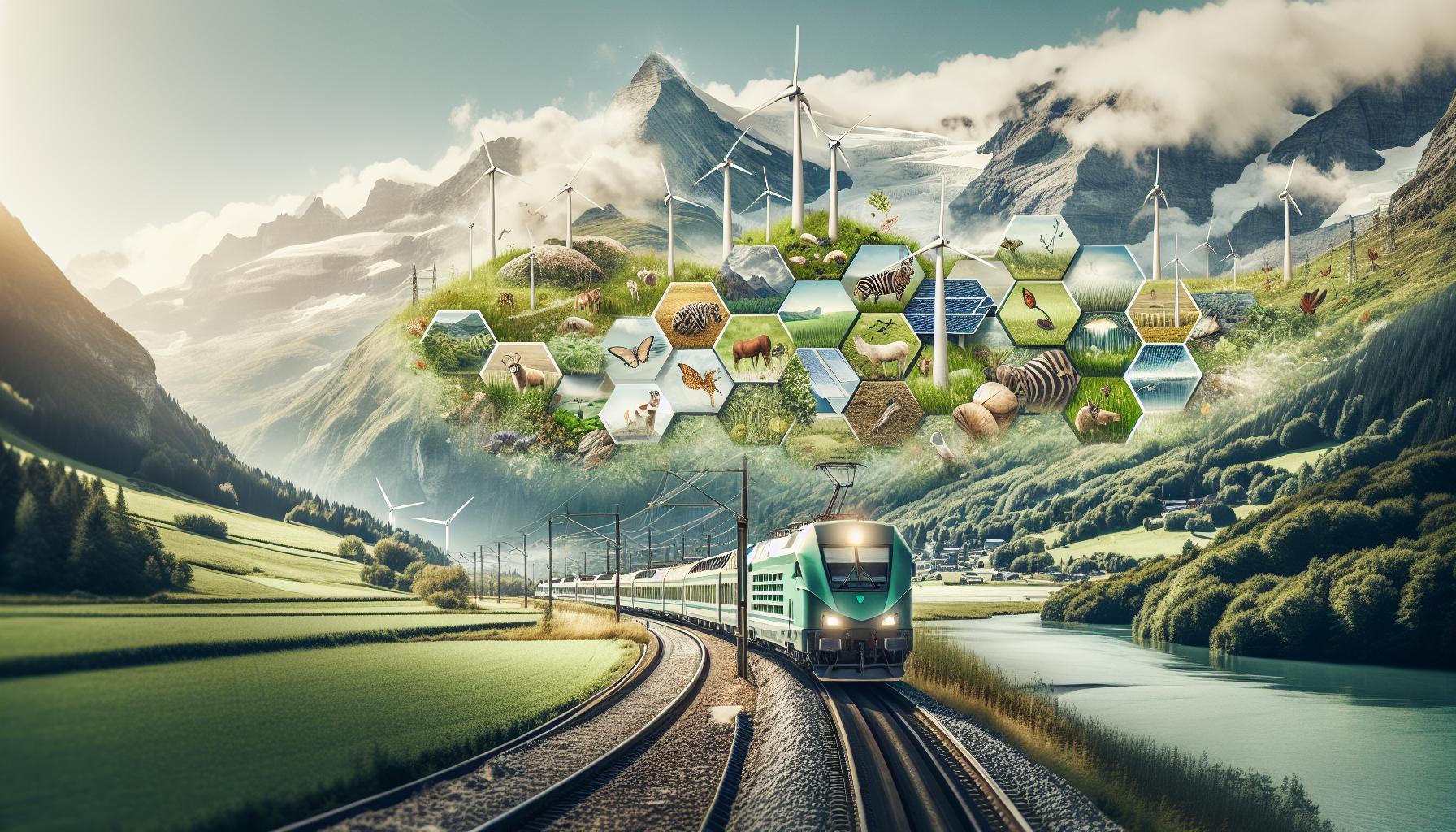Did you know that glaciers, often seen as unstoppable forces of nature, can actually flow uphill? This intriguing phenomenon occurs as glaciers retreat due to climate change, raising critical questions about our planet’s health and future. Understanding the dynamics of ice movement is essential for predicting the impacts of climate change on our ecosystems and communities.
As temperatures rise and glaciers melt, the implications reach far beyond the icy expanses of polar regions. Whether you’re a nature enthusiast, a student of environmental science, or simply someone concerned about the world we inhabit, discovering how and why ice flows in a retreating glacier can provide valuable insights into the broader effects of climate change.
Join us as we delve into this captivating topic, unraveling the secrets of glacier movement and its significance for our environment. By the end, you’ll gain not only knowledge but also a deeper appreciation for the delicate balance of nature-one that we can all contribute to preserving.
The Dynamics of Glacier Flow: An Overview
As glaciers age, they transform into dynamic rivers of ice, continuously reshaping the landscapes they traverse. Understanding the flow dynamics of glaciers, especially in the context of retreating glaciers, offers crucial insights into their behavior and the broader implications for our environment. Ice within a glacier flows primarily due to gravity, which exerts a force that causes the ice to move from areas of accumulation, typically higher altitudes, toward zones of ablation, lower elevations where melting occurs. This movement is not uniform; instead, it can be influenced by several factors, including temperature, precipitation, and the underlying topography.
The flow of ice can be described through two main mechanisms: sliding and internal deformation. Sliding occurs when the glacier moves over its bed, often facilitated by meltwater acting as a lubricant. This is particularly pronounced in warmer climates or during summer months when temperatures rise. Internal deformation refers to the gradual flow of ice due to the stresses placed upon it from the weight of overlying ice, which can cause it to deform and flow like a viscous fluid. The interplay between these mechanisms affects the direction and velocity of glacier flow, creating complex patterns that can seem counterintuitive, such as ice moving uphill in certain conditions.
In the case of glaciers retreating uphill, the phenomenon can often be attributed to varying climatic conditions that lead to increased melting at lower elevations while allowing snow accumulation at higher altitudes. This unbalanced state can result in the glacier’s ice front advancing up the slope, despite overall retreat. The notion of uphill flow challenges traditional perceptions of glacier dynamics and serves as a compelling reminder of how interconnected climate systems and geological processes are. By appreciating these dynamics, we can better understand the challenges glaciers face in a warming world and the potential consequences for global sea levels and ecosystems.
Ultimately, the study of glacier dynamics not only illuminates the pathways of ice flow but also emphasizes the importance of ongoing monitoring and research. Engaging communities in these discussions can foster a greater appreciation for glacial environments and encourage proactive conservation efforts. By understanding the movement of glaciers, we can advocate for policies that protect these vital natural resources while fostering a more resilient response to the climatic changes that dictate their fate.
Understanding Glacier Retreat: Key Concepts and Terminology
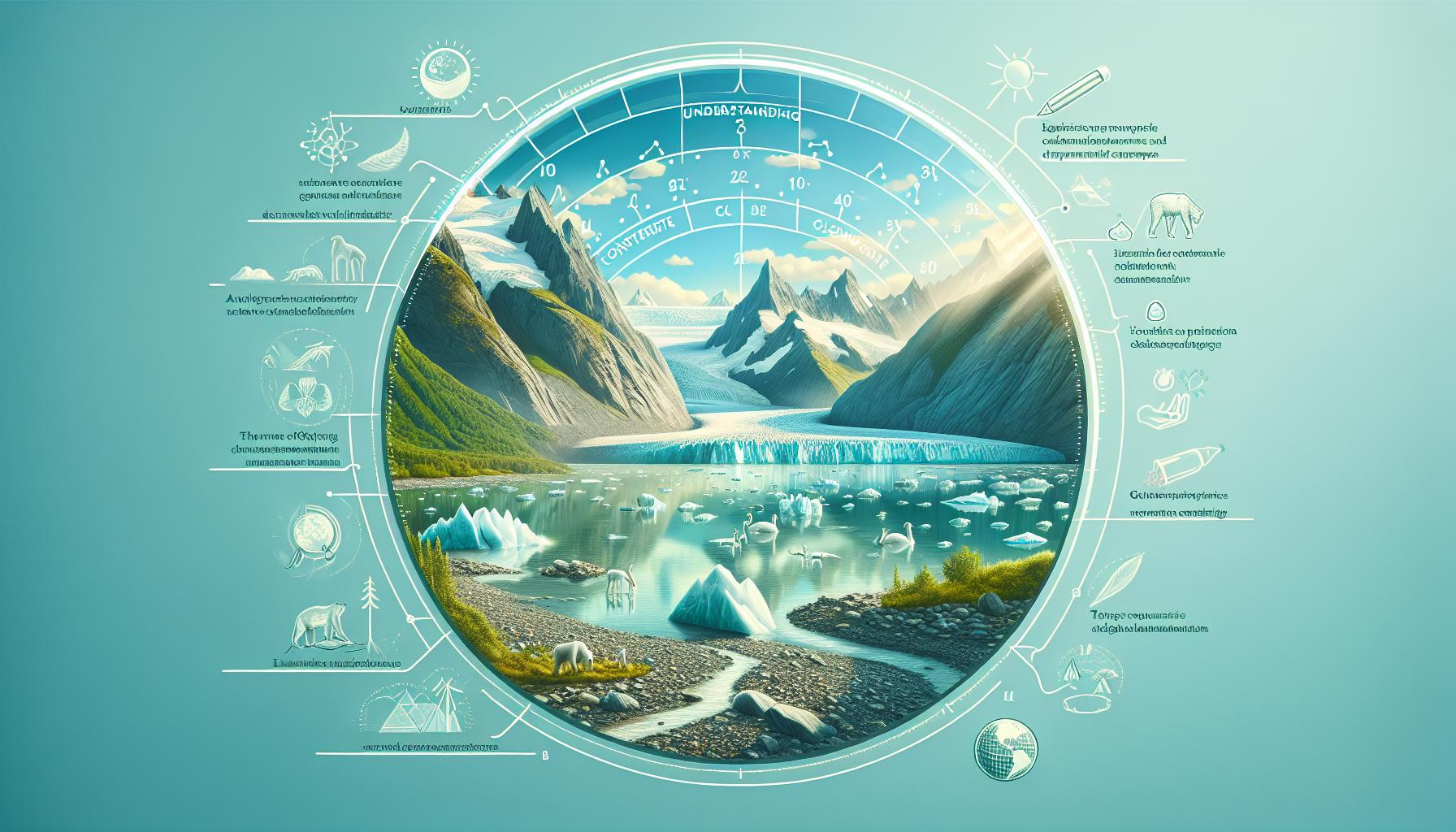
Understanding glacier retreat and its associated terminology is essential for grasping the nuances of how and why glaciers behave in the manner they do. As glaciers have long been seen as symbols of stability and longevity, the vision of them retreating uphill starkly contrasts with this perception, raising questions that merit exploration. One of the most critical concepts in this discussion is mass balance, which refers to the difference between the accumulation of snow and ice and the loss through melting, sublimation, or calving. When the mass balance turns negative, typically because of rising temperatures, glaciers begin to shrink, setting the stage for complex flow dynamics.
Another essential term is ablation, which is the process by which ice mass is lost. This includes melting, sublimation (transformation of ice directly into vapor), and calving (when chunks of ice break off). As temperatures rise and seasonal changes shift, ablation rates may exceed accumulation in lower areas of the glacier, leading to an observable retreat. This situation can paradoxically lead to a phenomenon termed uplift or uplift flow, where the glacier may appear to retreat uphill due to snow and ice accumulation at higher elevations compensating for losses below. This intriguing behavior highlights the glacier’s dynamic response to environmental changes.
To help clarify these concepts, consider the following key terms typically used when discussing glacier dynamics:
- Outlet Glaciers: Glaciers that flow from ice sheets into the ocean or other bodies of water.
- Terminology of Ice Flow: Understanding terms such as ‘snout’ (the terminus of a glacier), ‘surge’ (a rapid advance of a glacier), and ‘marginal zone’ (where the glacier interacts with its surroundings) is essential.
- Ice Streams: Fast-flowing sections within ice sheets that contribute significantly to ice loss.
The impact of climate change is evident in expanding the context of glacier studies. Climate feedback mechanisms, such as increased exposure of darker land or ocean surfaces as glaciers shrink, contribute to further warming. This interconnectedness highlights the urgent need for research and understanding of glacier dynamics not only to anticipate future changes but to inspire actionable conservation efforts.
In this age of environmental consciousness, engaging local communities in glaciology builds awareness and prompts proactive measures to mitigate climate change impacts. Through education and community involvement, individuals can become stewards of glacier preservation, promoting responsible actions that collectively enhance our understanding while protecting these remarkable natural wonders.
The Science Behind Glacier Movement: Gravity and Ice Dynamics
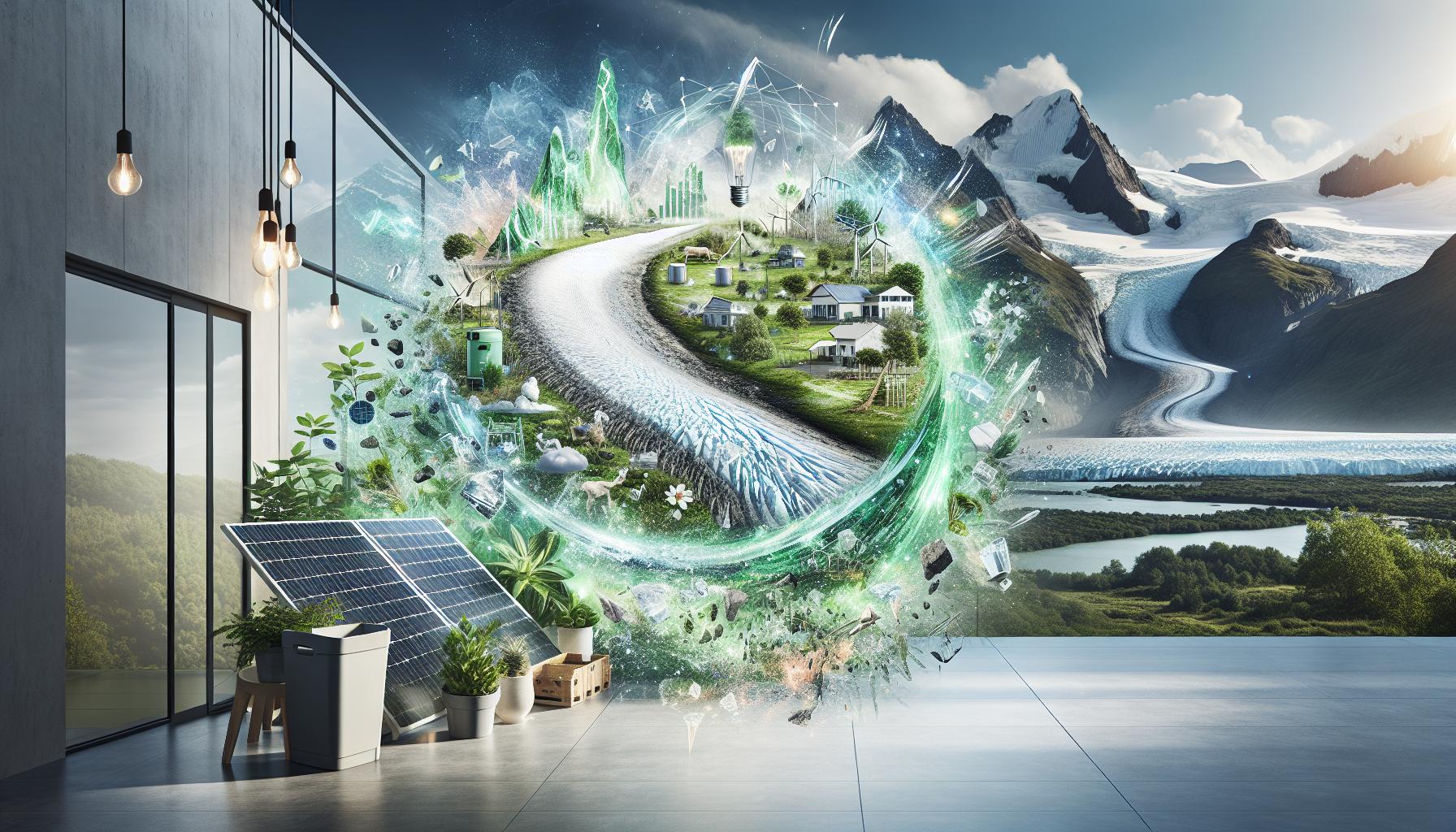
The interplay of gravity and ice dynamics is central to understanding the complex movements of glaciers, particularly when they exhibit the seemingly counterintuitive behavior of retreating uphill. As glaciers are vast rivers of ice, their flow and transformation are primarily driven by gravitational forces, along with the intrinsic properties of ice itself. The combination of these factors determines not only the direction of glacier movement but also the rates at which glaciers respond to changing environmental conditions.
Glacier flow starts with the enormous weight of accumulated ice pressing down on itself. This pressure creates a condition where the ice near the base begins to deform and slide over the underlying bedrock. The movement is further influenced by the melting of the ice at the base, due to geothermal heat and friction. This meltwater acts as a lubricant, reducing resistance and allowing the glacier to flow more easily. In areas where temperatures rise and lower sections of a glacier experience increased ablation, we might observe an uplift flow phenomenon-where thicker ice at higher elevations accumulates, compensating for losses below, causing the glacier to seemingly retreat uphill.
Understanding the dynamics of glacier flow requires consideration of various factors that influence ice movement. Some of these include:
- Temperature: Warmer air leads to increased melting, particularly at the glacier’s snout, often resulting in instability.
- Ice Thickness: Thicker ice accumulations at higher elevations contribute to gravitational pull and flow rates.
- Bedrock Composition: The geology beneath a glacier can affect its speed and path; smoother bedrock often allows for quicker movement.
- Slope: The incline of the terrain influences the direction and speed of the glacier’s flow.
In practical terms, the influence of these dynamics means that as climates change, glaciers may adapt in unexpected ways. The conservation of glaciers depends not only on understanding these natural processes but also on recognizing our role in mitigating climate change. Individuals can contribute by actively participating in local conservation efforts, advocating for policies that reduce greenhouse gas emissions, and educating their communities about the implications of glacier retreat. By fostering a deeper appreciation for these monumental ice formations, we can inspire collective action towards safeguarding them for future generations.
Factors Influencing Ice Flow Direction in Glaciers
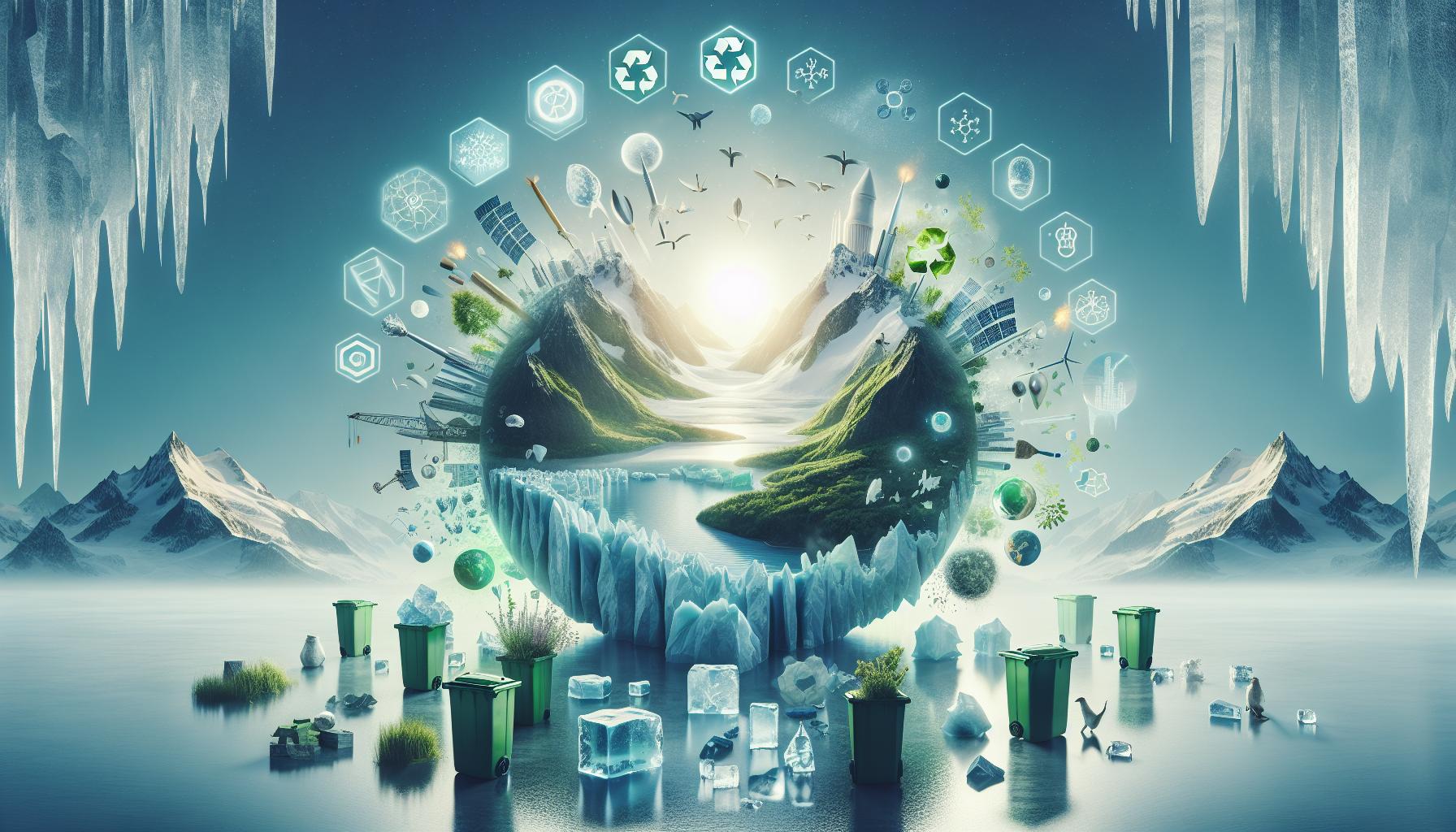
The movement of ice within glaciers is a fascinating and complex process influenced by various interrelated factors. While it may seem counterintuitive that glaciers can retreat uphill, understanding the dynamics at play reveals a system governed by physical laws and environmental conditions. As glaciers adjust to changes, the intricacies of their flow direction are shaped by several critical elements that interact dynamically.
First and foremost, the slope of the terrain where a glacier resides is a major determinant of flow direction. Steeper slopes naturally encourage ice to flow downhill due to gravity. However, when combined with other factors-such as increasing thickness at higher elevations-this can lead to intriguing phenomena where glaciers may appear to move uphill. In places where the thickness of the ice at high altitudes compensates for losses at lower elevations, the overall motion can reverse against the expected norm.
Another factor to consider is the composition and structure of the underlying bedrock. Smooth surfaces facilitate faster movement as the friction between the glacier and the bedrock decreases. Conversely, rough or uneven surfaces can impede flow, causing ice to pool in certain areas. These variations can create local flow dynamics that may not follow the more general trend expected from gravitational forces alone.
The significance of temperature cannot be overlooked in this context. Warmer temperatures at the glacier’s surface can lead to increased melting and ablation, particularly at the glacier’s snout. This process alters the weight distribution and pressure on the glacier, potentially resulting in realignments of ice flow. As different sections of the glacier react to temperature changes, the overall dynamics may shift, sometimes resulting in uphill movement as thicker, colder ice at higher elevations reacts differently than warmer, melt-prone ice below.
Moreover, climatic conditions significantly affect glacier behavior. Seasonal variations can result in differing rates of melting and accumulation, thereby influencing the balance of ice flow. Glaciers that receive more snowfall may gain mass at higher elevations, which can redirect ice flow toward these areas while retreating from lower, ablated regions.
By understanding these factors-slope, bedrock composition, temperature, and climatic influences-individuals and communities can better appreciate the delicate balance of glacier systems and their responses to our changing environment. This knowledge empowers citizens to participate actively in conservation initiatives, enhancing recognition of glaciers as critical indicators of climate change and motivating efforts to protect these vast ice formations for future generations.
Exploring the Phenomenon of Uphill Glacier Retreat
The strange yet fascinating behavior of some glaciers retreating uphill challenges our conventional understanding of ice movement. This phenomenon, often considered counterintuitive, sheds light on the complex dynamics governing glacier behavior in a warming world. As scientists delve deeper into the mechanics of glacier movement, it becomes increasingly evident that multiple interconnected factors converge to facilitate this upward flow of ice.
Many glaciers exhibit this uphill retreat due to variations in ice thickness and topography. In some cases, glaciers may accumulate more mass at higher elevations, where snowfall rates can exceed melting rates, even as lower regions experience significant ablation. This disparity in accumulation can create a scenario where the glacier’s center of mass shifts, pushing the ice to flow in reverse of what gravity alone would dictate. It’s not just about the slope; it’s about how the glacier adapts to its immediate environment, a capability made possible by the viscoelastic nature of ice, which allows it to flow, even against gravitational dictates.
Snowfall and Temperature: The Catalysts of Change
Snowfall plays a pivotal role in this uphill movement. When a glacier receives substantial snowfall at its upper reaches, it can lead to an increase in ice mass that effectively alters its flow dynamics. In contrast, warmer temperatures at lower elevations cause enhanced melting, resulting in a situation where the glacier retreats from the warmer zones while maintaining or even advancing in the colder, higher areas. This interplay creates a scenario that can appear unusual but is fundamentally a response to environmental changes.
Additionally, localized effects such as sublimation-the process where ice transforms directly into vapor without first becoming liquid-contribute to the complexity of glacier dynamics. When sublimation occurs at the glacier’s surface, it can subtract from overall ice volume, but during warmer months, if temperatures allow for substantial sublimation without corresponding increases in snowfall, this may also facilitate an apparent uphill movement of the glacier.
The Importance of Community Awareness and Action
Understanding the mechanics behind uphill glacier retreat is essential not only for scientists but also for communities living near glacial regions. Local stakeholders can benefit from this knowledge, as it can influence decisions related to water resources, tourism, and climate adaptation strategies.
Community advocacy for sustainable practices and climate awareness can mitigate some adverse effects of climate change that exacerbate glacier retreat. Efforts can include supporting local conservation initiatives aimed at preserving glacial environments and reducing carbon footprints through lifestyle changes and policy advocacy.
By actively engaging with what seems like an unusual geological phenomenon, communities can better grasp their interconnectedness with the natural world and foster a collective responsibility toward preserving these majestic ice formations. Through education and action, individuals and communities can play a pivotal role in protecting glaciers, ensuring their legacy for future generations.
Case Studies: Observed Examples of Glaciers Retreating Uphill
The phenomenon of glaciers retreating uphill is not just an unusual occurrence; it serves as a critical indicator of climate dynamics and environmental change. Several important case studies illustrate this behavior, shedding light on the intricate mechanisms at play. These instances, captured through meticulous research, demonstrate that glaciers can adapt to their surroundings in ways that defy our traditional expectations of ice movement.
One notable example can be found in the Zungenbecker Glacier in the Eastern Alps, which has shown significant uphill retreat. Researchers have noted how increased snowfall at higher elevations has led to accelerated growth in these areas, even as warmer temperatures at lower altitudes create rapid melting. Here, as ice builds up due to favorable accumulation, the glacier’s mass shifts, leading to an upward flow that challenges the conventional route dictated by gravity. This case illustrates how localized climate conditions can greatly influence glacier dynamics and highlights the importance of understanding microclimates in glacier studies.
Moreover, in the Himalayan region, particular glaciers such as the Gangotri Glacier have been observed to move uphill amidst changing climatic conditions. Scientists have documented that while lower sections are retreating, the upper regions gain mass, resulting in a complex flow pattern that appears almost counterintuitive. This change not only reflects variations in accumulation versus ablation but also indicates the glacier’s response to shifting weather patterns and global warming influences.
The implications of such case studies extend beyond scientific curiosity; they underscore the need for community engagement and action. Local populations depend on glaciers for fresh water, agriculture, and tourism, and understanding these retreats can lead to proactive management of resources and conservation efforts. Individuals can become advocates for sustainable practices and support initiatives aimed at reducing carbon footprints. Through education and awareness, communities can adapt to shifting glacier behaviors, forging a path toward resilience in the face of climate change.
As we monitor these fascinating glaciers and their responses to environmental changes, it becomes clear that what might appear as a simple geological event carries profound implications for ecosystems, water resources, and human livelihoods, inspiring a communal effort toward understanding and safeguarding these vital natural resources.
The Role of Climate Change in Glacier Behavior
One striking aspect of glaciers is their dynamic behavior, particularly as influenced by climate change. As global temperatures rise, the effects on glaciers can often seem paradoxical; one notable manifestation is the phenomenon of glaciers retreating uphill. This counterintuitive movement can primarily be attributed to alterations in temperature, precipitation patterns, and the associated changes in cryospheric conditions.
A profound impact of climate change on glacier behavior lies in the altered balance between accumulation and ablation. Under normal circumstances, glaciers accumulate snow in their upper reaches, which subsequently compacts into ice, while downslopes typically experience melting due to warmer temperatures. However, climate change can disrupt this balance. For instance, when increased snowfall occurs at higher altitudes while lower areas become subject to rapid melting, the glacier’s mass can shift. This accumulation at higher elevations contributes to growth in those regions, allowing for an uphill flow of ice, essentially defying the gravitational norms one might expect.
Additionally, changes in temperature can lead to the development of intricate microclimates that significantly influence glacier dynamics. In areas like the Eastern Alps, localized weather patterns can create conditions favorable for ice accumulation despite rising temperatures at lower elevations. This phenomenon not only highlights the variance in climatic conditions but also emphasizes the resilience of glaciers in response to changing environments. Observing glaciers such as the Gangotri in the Himalayas exemplifies how local climate adaptations can result in complex and sometimes puzzling behavior, showcasing the interconnectedness of local ecosystems and global climatic trends.
To effectively address these dramatic shifts in glacier behavior, community engagement and proactive management become essential. By fostering awareness of the implications that ice dynamics have on water supply and biodiversity, communities can work together to develop more sustainable practices. Initiatives like conservation efforts and responsible tourism can help mitigate risks associated with glacier retreat, while individuals can lead by example in reducing their carbon footprints. The urgent need for collective action is underscored by the fact that glaciers are not merely natural monuments; they are vital reservoirs that support diverse life forms and human activities alike.
As we deepen our understanding of how climate change influences these majestic ice bodies, it becomes clear that proactive and informed approaches at both local and global levels can chart a path toward a more sustainable future, garnering hope amidst the challenges posed by our rapidly changing planet.
How Surface Topography Affects Ice Flow Patterns
One of the most fascinating aspects of glacier dynamics is how surface topography intricately influences the flow patterns of ice, particularly in the context of glacier retreating uphill. Glaciers are not merely flat, moving masses of ice but complex entities shaped by the contours of the land beneath them. This interaction between ice and landscape is crucial to understanding why some glaciers are behaving in unconventional ways, such as relocating upward rather than the expected downward flow.
The elevation changes, slopes, and geological features of a glacier’s surroundings dictate where ice can move. For example, steep terrain can enhance the speed at which ice flows downhill under the influence of gravity, while hollows or depressions can act as reservoirs for accumulating ice, directing it towards areas of higher elevation. Conversely, topographic features such as ridges or escarpments can impede glacial movement, serving as barriers that force ice to spread in alternative directions. Over time, these processes can lead to situations where glacial tongues may advance uphill, particularly in zones of significant accumulation influenced by localized weather patterns and changing climate conditions.
Impact of Climate on Topography and Ice Flow
The roles of temperature changes and precipitation in reshaping topographical impacts on glaciers cannot be understated. Significant snowfalls at higher altitudes bolster the accumulation zone of a glacier, allowing it to grow and even flow upward. This phenomenon is particularly observable in regions where complex microclimates, influenced by factors such as wind patterns and exposure, create conditions favorable for snow retention and accumulation. For instance, the glaciers in the Andes Mountains demonstrate how orographic lifting-where moist air is forced to rise over mountainous terrain-can contribute to substantial snowfall at higher altitudes, leading to an inversion of expected flow patterns.
Understanding how surface topography impacts ice flow patterns can empower communities and researchers working to track and react to changes in glacier dynamics. By integrating environmental monitoring techniques and innovative sensors, stakeholders can map and analyze glacier movements more efficiently, gathering crucial data that guides conservation efforts. Potential actions could include enhancing local protective measures for vulnerable ecosystems affected by changing glacier behaviors or implementing policies aimed at reducing climate impacts at the community level.
In conclusion, the remarkable interplay between surface topography and glacial dynamics offers critical insights into the future of these ice giants. As we confront the ongoing challenges posed by climate change, recognizing how different facets of the landscape influence ice flow can inform both scientific understanding and public engagement regarding glacier conservation. Through cooperative efforts, communities can not only better adapt to these changes but also take meaningful steps towards preserving one of our planet’s most vital resources.
The Impact of Sublimation and Melting on Glacier Dynamics
The delicate balance of glacier dynamics is heavily influenced by the processes of sublimation and melting, which profoundly affect ice flow, especially in the context of glaciers retreating uphill. Sublimation, the transition of ice directly into water vapor without first becoming liquid, can occur in open environments where dry, warm air is prevalent. This process not only shrinks glaciers but also alters their stability and future flow patterns. As glaciers lose mass through sublimation and melting, the gravitational pull that typically directs ice movement downhill may become insufficient to drive expected flow, allowing ice to shift instead into higher elevations under certain conditions.
Understanding these melting and sublimation processes reveals key insights into how glaciers respond to fluctuating climate conditions. For instance, the rate of melting is often dictated by temperature gradients, solar radiation, and the presence of impurities like dust or soot, which can accelerate ice melt by lowering the albedo effect (the ice’s ability to reflect sunlight). In regions such as the Himalayas, increased episodes of melting that coincide with warmer seasons lead to more water available for percolation into the glacial body, further influencing internal pressures and movement.
The Role of Surface Features
Surface features can also play a crucial role in how melting and sublimation occur. Cracks and crevasses formed in glacier ice can serve as conduits for water to reach the glacier base, where it can lubricate the underlying bedrock, potentially accelerating movement and leading to unexpected flow patterns, including uphill retreat in some cases. This phenomenon is significant because it suggests that superficial changes on glaciers due to climate conditions can also have profound effects on ice dynamics deep within the glacier.
Community Actions for Glacier Conservation
Addressing the challenges presented by sublimation and melting starts with community awareness and action. Here are some practical suggestions for individuals and communities looking to contribute:
- Advocate for Sustainable Practices: Support local policies promoting renewable energy and conservation efforts to reduce carbon footprints.
- Participate in Citizen Science: Get involved in data collection initiatives that monitor changes in glacier conditions, helping scientists track melting patterns.
- Educate Others: Share knowledge about the impacts of climate change, sublimation, and melting on glacier dynamics within your community.
- Promote Local Conservation Projects: Invest time or resources in preserving natural landscapes that can help mitigate the effects of climate change on glaciers.
With understanding and proactive engagement, communities can not only adapt to changes in glacier behavior but also play a vital role in enhancing conservation efforts, helping to ensure that these magnificent natural features continue to inspire future generations.
Future Implications: What Uphill Glacier Retreat Means for Ecosystems
The unexpected phenomenon of glaciers retreating uphill raises significant concerns about ecological balance and the future of diverse ecosystems. While it may seem counterintuitive, this pattern of ice flow can disrupt established environmental conditions, potentially leading to cascading effects for the flora and fauna that depend on stable glacial habitats. As glaciers shrink, the habitats that were previously nourished by glacial meltwater become altered, impacting both the local communities and biodiversity reliant on these ecosystems.
The retreat of glaciers has several implications for surrounding ecosystems. A notable consequence is the alteration of hydrological cycles, which can result in changes in water availability. In regions fed by glacial meltwater, such as the Andes and the Alps, communities and ecosystems are accustomed to a steady flow of fresh water. As glaciers retreat and their melting patterns shift, this could lead to bouts of flooding followed by periods of drought. For instance, in the Himalayas, reduced meltwater availability can threaten the livelihoods of farmers and downstream communities, while also jeopardizing the delicate balance of aquatic ecosystems that rely on consistent water levels.
As temperatures continue to rise, plants and animals adapted to previously stable conditions face new challenges. Species that thrive in cooler environments may find their habitats shrinking or shifting, leading to increased competition and possible extinction for those unable to adapt quickly. This shift can necessitate changes in conservation strategies, focusing on protecting crucial habitats and corridors that allow species to migrate as their environments change. Meanwhile, new species may move into these areas, altering the ecological balance and sometimes introducing invasive species that threaten local biodiversity.
Community Resilience and Adaptation
Communities can play a pivotal role in recognizing and addressing these shifts brought on by uphill glacier retreat. Here are some practical approaches they can adopt:
- Water Management Strategies: Develop adaptive management plans that consider changing water availability patterns. This might include the construction of reservoirs, rainwater harvesting, and enhanced irrigation techniques.
- Habitat Restoration Projects: Engage in habitat restoration projects that emphasize reforestation and the protection of riparian zones to enhance biodiversity resilience.
- Education and Engagement: Foster awareness among local populations about the interconnectedness of glaciers, ecosystems, and climate, empowering them to participate in sustainable decision-making.
- Research Collaboration: Support ongoing research into ecosystem changes linked to glacier dynamics, fostering partnerships between scientific communities and local stakeholders to develop innovative solutions.
By embracing a proactive and informed approach, communities not only safeguard their immediate environmental concerns but also contribute to the broader effort of maintaining ecosystem integrity in the face of climate change. The understanding of uphill glacier retreat and its implications lays the groundwork for thoughtful conservation and adaptation strategies that can ensure a sustainable future for both human populations and the ecosystems they depend on.
Innovative Research and Technologies in Glacier Studies
Recent advancements in research and technology are transforming our understanding of glaciers, particularly as we grapple with the phenomenon of glaciers retreating uphill. This unexpected behavior has drawn the attention of scientists worldwide, leading to innovative techniques that enhance our ability to monitor, analyze, and predict glacier dynamics. By incorporating cutting-edge tools such as satellite imagery, drone technology, and advanced modeling software, researchers are unlocking the complexities of ice flow and its interaction with the surrounding environment.
Satellite imagery allows scientists to gather extensive data across vast glacier expanses, enabling them to monitor changes in ice volume, surface temperature, and melt patterns over time. One remarkable example is NASA’s Ice, Cloud, and Land Elevation Satellite-2 (ICESat-2), which uses laser altimetry to measure changes in ice sheet thickness with exceptional precision. This technology can detect even minor fluctuations, contributing significantly to our understanding of unpredictable processes like uphill glacier retreat. Additionally, remote sensing techniques help researchers identify the influence of snow cover and surface melt on ice dynamics, offering critical insight into how these factors affect trajectories of moving ice.
Drones are also becoming invaluable tools for glaciologists. Equipped with high-resolution cameras and sensors, drones can fly over inaccessible areas, providing detailed topographical data and aerial imagery. This capability allows scientists to map out features that influence ice flow direction, such as crevasses and moraines, revealing how these features might redirect ice movement uphill. Moreover, drones can gather real-time measurements of ice temperature, surface roughness, and snow depth, offering a comprehensive view of glacier health and behavior in conjunction with traditional ground surveys.
Advanced modeling software plays a crucial role in predicting future behaviors of glaciers under various climate scenarios. By integrating data collected from satellites and drones, researchers can employ computational models to simulate how glaciers might respond to ongoing climate change. These simulations help to visualize how factors like increasing temperatures and altered precipitation patterns will impact glaciers and surrounding ecosystems. Initiatives such as the Glacial Climate Interactions Model (GCIM) exemplify efforts to create a dynamic framework for understanding ice flow and retreat mechanisms, particularly in relation to uphill movement.
As individuals and communities consider how to adapt to these changes, leveraging this innovative research becomes paramount. Engaging with local scientists and participating in monitoring programs can empower communities to take informed actions in conservation efforts. With the help of modern technology, we can enhance our understanding of glaciers, fostering a collective responsibility towards their preservation and the ecosystems that depend on them. By supporting research initiatives and advocacy for technological integration in climate studies, we can contribute to a sustainable future in the face of change.
How Individuals Can Contribute to Glacier Conservation Efforts
Individuals play a pivotal role in the conservation of glaciers, particularly as we face the increasingly concerning phenomenon of uphill glacier retreat. Engaging in glacier conservation not only helps protect these vital ecosystems but also contributes to broader efforts against climate change. By becoming informed and proactive, anyone can make a difference. Simple actions, such as reducing carbon emissions, can help mitigate climate change, the primary driver of glacier retreat.
One effective approach is through education and advocacy. Educating oneself and others about glacier dynamics and climate change is crucial. Initiating conversations within the community about the implications of glacier retreat-like rising sea levels or changes to local water resources-can raise awareness and motivate collective action. Communities can organize workshops, participate in local environmental committees, or collaborate with educational institutions to host public forums. By sharing knowledge and insights, individuals can foster a community-wide commitment to conservation efforts.
Another impactful way to contribute is through participation in citizen science programs. Many organizations offer opportunities for the public to engage in monitoring and research efforts. For example, initiatives like Glacier Watch allow volunteers to report changes in local glaciers or participate in data collection for ongoing research. By harnessing the power of local observations, these efforts help scientists gather vital information and provide a clearer understanding of glacier behavior. Moreover, individuals can utilize technology, such as smartphone applications to document and track changes.
Support for conservation organizations is also essential. Contributing time or resources to organizations dedicated to glacier preservation helps amplify their impact. Many groups offer volunteer programs or accept donations that fund research, preservation initiatives, and community education. Moreover, staying informed about current policies and advocating for legislation that protects glacial ecosystems can further influence positive change.
Lastly, adopting sustainable living practices is a tangible way to contribute. Small daily choices, such as reducing energy consumption, using public transport, or choosing sustainable products, collectively lead to significant reductions in greenhouse gas emissions. By making eco-conscious decisions and inspiring others to do the same, individuals can promote a healthier planet for future generations and help stabilize the conditions that affect glacier behaviors.
In conclusion, understanding the crucial role glaciers play within our ecosystems underscores the importance of individual action. By fostering awareness, engaging in citizen science, supporting conservation efforts, and leading sustainable lifestyles, everyone can contribute to protecting glaciers and, by extension, the planet-ensuring that these majestic natural features continue to thrive for years to come.
Frequently Asked Questions
Q: Which way does ice flow in a glacier retreating uphill?
A: Ice in a glacier primarily flows downhill due to gravity. However, in retrograde or retreating glaciers, sections of ice can also move uphill in rare conditions where meltwater lubrication reduces friction, allowing the ice to flow in unexpected directions. For further insights on glacier dynamics, explore our section on glacier movement.
Q: What causes glaciers to retreat uphill?
A: Glaciers retreat uphill when the rate of melting exceeds the accumulation of snow and ice. Factors include climate change, temperature rise, and changes in precipitation. As glaciers lose mass, they may appear to move backward, especially in complex terrain. Check our article on climate impacts for detailed analysis.
Q: How does melting affect the flow of glacial ice?
A: Melting affects glacial ice flow by adding liquid water, which reduces friction and can enhance sliding. This process can lead to unusual ice movements, including uphill flows in certain conditions. Understanding these dynamics highlights the complex interactions within glacier environments.
Q: What is the role of meltwater in glacier retreat?
A: Meltwater plays a crucial role in glacier retreat by acting as a lubricant, facilitating the movement of ice. It can create channels beneath the glacier, allowing for accelerated flow and potential uphill movement in some areas. For more on glacier hydrology, refer to our detailed section on water dynamics.
Q: Why do glacial movements vary in different regions?
A: Glacial movements vary due to factors like local climate, topography, and ice composition. In some regions, enhanced melting leads to faster retreat and unexpected flow patterns, while others may experience stagnation. Examine our comparative study of global glaciers to understand these variations.
Q: When do glaciers typically experience uphill movement?
A: Glaciers may experience uphill movement during rapid melting seasons combined with significant rainfall. Such conditions can create a slippery substrate, prompting sections of the glacier to flow uphill temporarily. Investigating seasonal patterns can provide deeper insights into these occurrences.
Q: How do scientists study glacier flow and retreat?
A: Scientists study glacier flow and retreat using satellite imagery, GPS data, and ice-core samples. These methods provide valuable information on ice dynamics, including unusual uphill movements. For an overview of research techniques, check our section on glaciology methods.
Q: Where can I learn more about glacier dynamics and climate change?
A: You can learn more about glacier dynamics and their relationship with climate change by exploring dedicated resources on glaciology and environmental science. Our main article offers extensive information, or check out the links provided for additional reading on this important topic.
For more engaging insights on glaciers and their impact on the environment, continue exploring our blog!
In Summary
As we conclude our exploration of how ice flows in a glacier retreating uphill, it’s essential to recognize the profound implications this phenomenon has on our environment. Understanding these dynamics is crucial not only for climate science enthusiasts but also for anyone interested in the future of our planet. If you found this article enlightening, consider diving deeper into related topics such as the effects of climate change on glacial melt or the importance of preserving our ice caps.
We encourage you to share your thoughts or questions in the comments below-engaging with our community helps amplify these critical discussions. Additionally, stay informed by signing up for our newsletter, where we provide regular insights into environmental science and sustainability. Don’t miss out on discovering how your actions can contribute to a brighter future; explore our resources today and join the movement towards greater environmental awareness. Together, we can make a difference.

